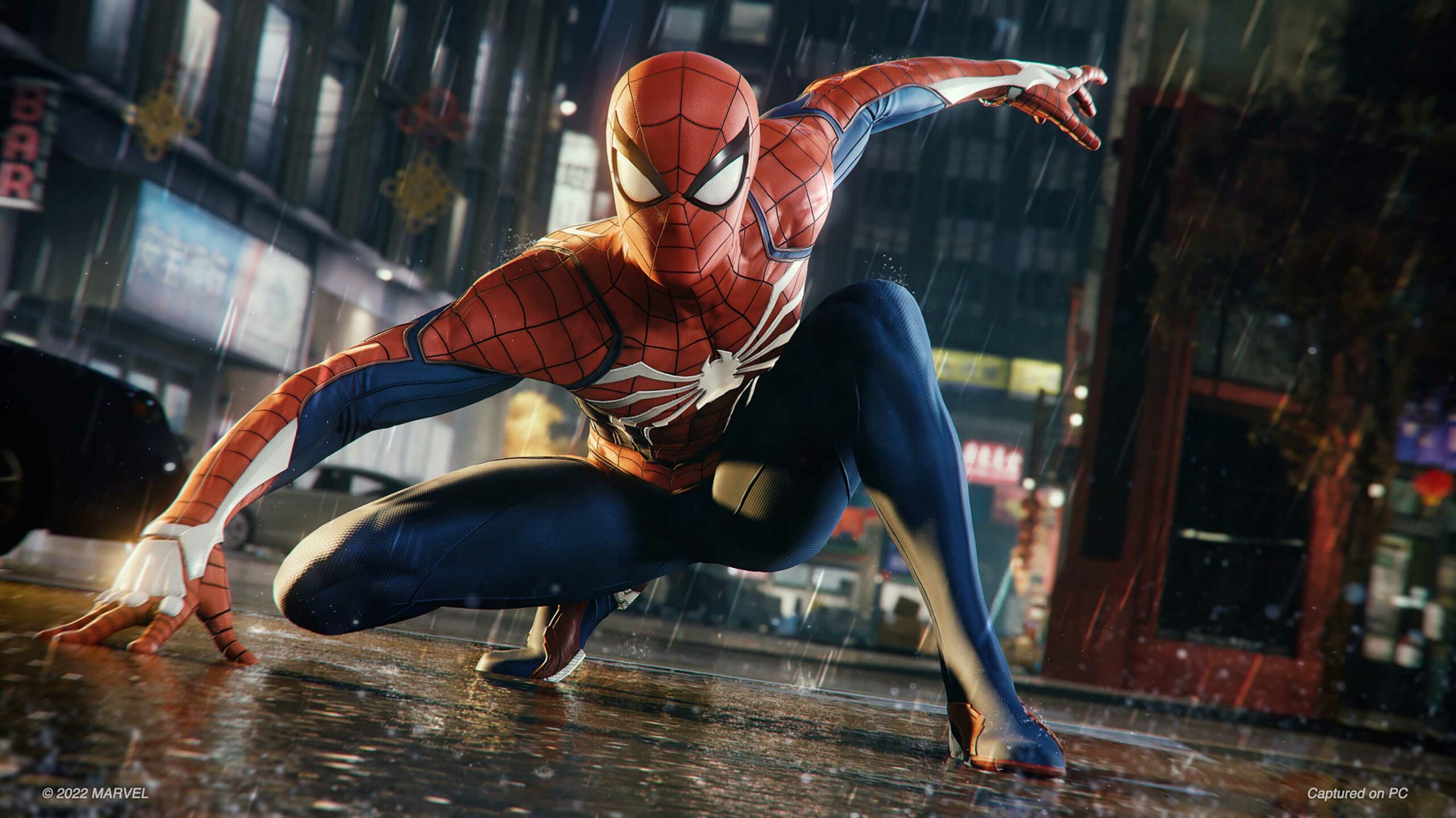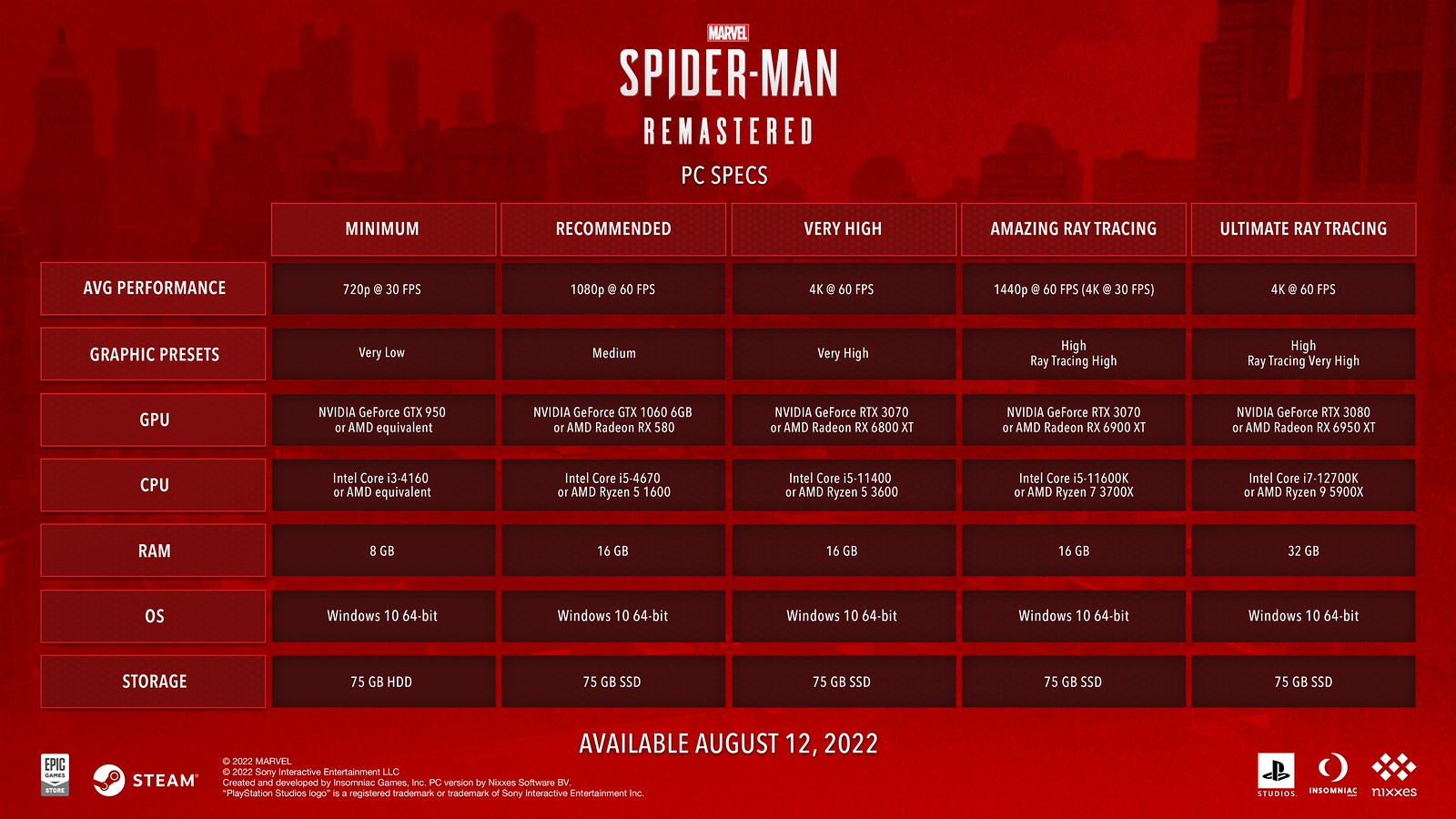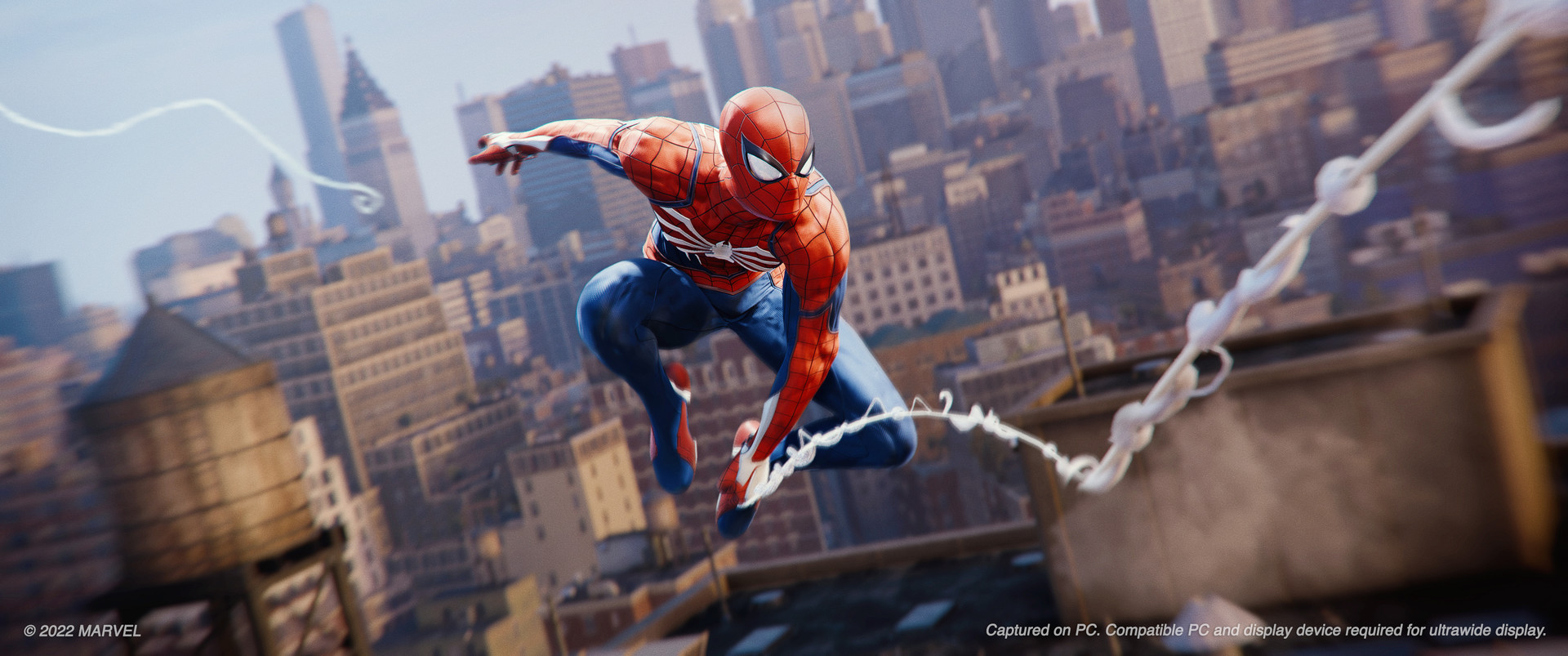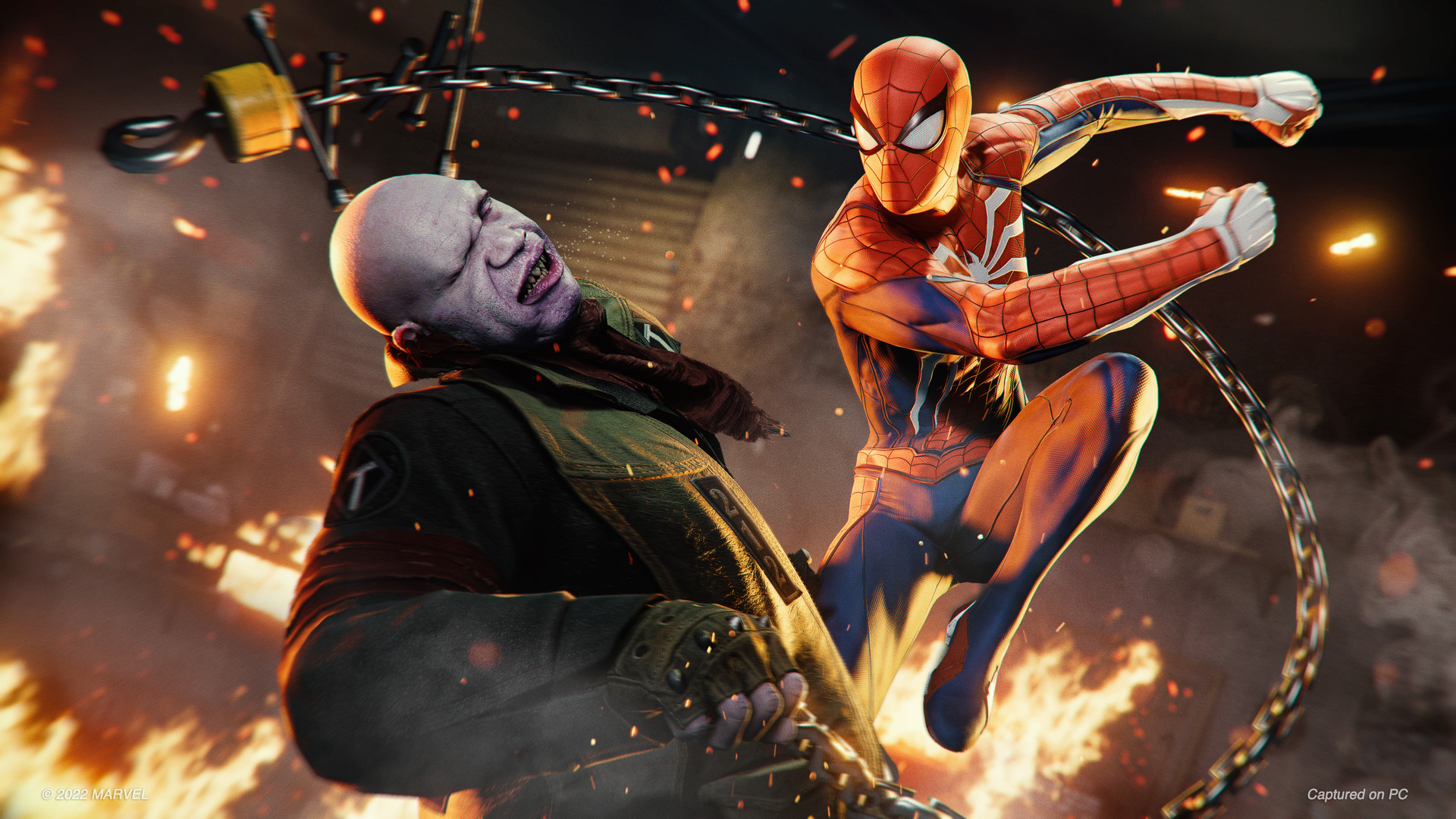
Last year, PlayStation acquired Utrecht, Netherlands-based Nixxes, a veteran team with particular expertise in PC development.
The message behind this purchase was quite clear: more PlayStation games are coming to PC. Fast forward one year and Nixxes is about to release Marvel’s Spider-Man Remastered, the enhanced version of 2018’s beloved PS4 game, Marvel’s Spider-Man, on PC for the first time. Assisting with the port? Burbank, California-based Insomniac Games, the original developer of the Marvel’s Spider-Man series.
Together, the studios have brought several features to Marvel’s Spider-Man Remastered on PC, including ray-tracing, Nvidia DLSS (Deep Learning Super Sampling), Nvidia DLAA (Deep Learning Anti-Aliasing), a multitude of display ratios, mouse and keyboard support and the option to use PS5’s DualSense controller for adaptive triggers and haptic feedback.
To learn more about Marvel’s Spider-Man Remastered, MobileSyrup sat down with Jurjen Katsman, Nixxes founder and senior director of development, and Mike Fitzgerald, Insomniac core technology director. Together, the pair offered insight into the two PlayStation studios’ close partnership, the technical work that went into getting Marvel’s Spider-Man Remastered up and running on PC, swinging around New York City on the Steam Deck and more.
MobileSyrup: Jurjen, Nixxes has a long history of PC game development, but you’ve also worked on several PlayStation games. Your first project, even, was a Dreamcast port of Legacy of Kain: Soul Reaver, which is a classic PlayStation game, so it’s almost a full circle moment to be part of PlayStation Studios. What’s it been like for Nixxes to make that transition and be welcomed into the PlayStation family over the past year?

Jurjen Katsman, Nixxes founder and senior director of development.
Jurjen Katsman: That’s certainly been really exciting. It’s interesting how you sort of took it all the way back to Soul Reaver — I hadn’t made that link yet. But yeah, [we] certainly worked on that originally as we were putting out on PlayStation back then. And then, in general, we’ve just had a connection with PlayStation for many, many games. We’ve done a lot of ps3 titles. In the past, we’ve got a bunch of PS5, then some other PS5 games, even, in addition to all those PC work. And we knew various people before who worked at PlayStation studios, especially some local ones. So in many ways, it was a sort of break away from the previous home, but certainly also felt like coming home to a new home — a great home. That was a really nice move. So we really excited about it.
One thing I actually was doing a little while before, as we were wrapping some of the projects, I had some discussions with the team about, ‘hey, whatever projects would you guys be excited to work on in the future?’ And it could be a dozen publishers. And it was interesting how many Sony projects came up in the people’s wish list. It wasn’t even a realistic list. Everybody’s going crazy, and it was interesting sometime after that to start working on some of those, including Spider-Man. So that was it was good news for the team. And everybody was really, really excited to join PlayStation Studios, and especially the partnership with Insomniac has been a really, really big part of that.
Q: What’s the collaboration between Insomniac and Nixxes been like, especially considering one team is in the U.S. and the other in the Netherlands?
Mike Fitzgerald: It’s been a great collaboration from my point of view. We’ve tried to get a lot of our tech folks chiming

Mike Fitzgerald, Insomniac’s core technology director.
in and getting Nixxes up and running on our tools and our engine and understanding all the bits and bobs and how it fits together and where the opportunities were to do a bit more on PC. But they’ve also just taken it and run with it and really done a great job bringing it to the PC. So it’s been nice to be involved and have the team understand what Nixxes is doing and why it’s important, but also not have it be a big devotion of our time and we can keep focusing on the other projects that we have in development.
Katsman: To anchor on that, I think it’s really interesting how much, in one way, the teams are really quite independent and working on their own different things, but even though that is true, how much they interact and just chat and talk to each other about technology about things that are going on in the game or going on with the engine. So I think that’s actually been really exciting for me to see and the team is incredibly excited about that.
Fitzgerald: [to Katsman] You mentioned other people’s wishlists of PlayStation games, and I think if we [Insomniac] had a little wishlist of studios to work with to bring our games to PC, Nixxes is at the top of that. So things lined up really, really nicely for us to do this together.
Q: Mike, as someone who originally created Marvel’s Spider-Man and then brought it to PS5, what’s the process been like to bring your work to PC? And for Jurjen, what’s it like from more of an outsider’s perspective to come on board as a fan of Insomniac and Marvel’s Spider-Man and help port the game?
Fitzgerald: For me, I think as someone who makes games — really, at the end of the day, what you want is for people to play it, and have a lot of fun playing it. And so just thinking about [how] we can get our game that has, very thankfully, already seen many, many millions of players in front of many, many more millions of players, hopefully, via the PC is just as exciting. That’s what it is for me.
Katsman: And I think for [Nixxes], it’s really exciting to do, because they’ve played this game, they’ve loved this game, and then being able to go in there, as engineers, to understand that engine, see the clever things they were doing there, maybe, in some cases, even like, ‘oh, that’s how I would have done it, great!’ And that’s the sort of thing that our team really gets to do quite a lot and really enjoys doing — diving into different engines, working with different companies, and just adding another one to that list that they really enjoyed working on.
Q: A lot of people underestimate how difficult game development can be, and for a port, in particular, some people might assume it’s sort of an easy ‘copy-and-paste’ job, which obviously isn’t true. With that in mind, can you give some insight into the behind-the-scenes work that goes into bringing a game, especially one as big as Marvel’s Spider-Man, from PS4/PS5 to PC?

Katsman: I think the first one that comes to mind, sort of thinking through the ‘cut-and-paste’ idea — the Insomniac [proprietary] engine has a history on PC, though it’s been quite a few years ago since they shipped on PC. For example, it has the DX11 Renderer; on the DX11, we can’t do any ray tracing. So we did have to fully rebuild the renderer for DX12. And that’s not just a cut and paste; there’s a lot of real work to do to make sure that aligns well and runs efficiently. So people put in an awful lot of work into that. And then the challenge there that is new to PC is the variation of hardware and features, even, that people are looking for. That just adds a whole other level of complexity. It’s actually quite common for a lot of studios to have a version of their game just as they made it on consoles, but that is not a shippable PC product — it needs a lot of customizations capability, and potentially other features to really turn it into a shippable PC game. We spent quite a while still adding [all of this], even though the original game was already there and already really great.
Fitzgerald: I think supporting a vast array of hardware is something that certainly has taken a lot of work and attention and something that Insomniac isn’t familiar with these days. It’s a luxury on our part to have one console, one configuration of hardware, that it runs on. So that’s been a new one, but for us, this has been an opportunity to learn from a studio like Nixxes that’s done this work and has so much experience there and hoping it rubs off on us.
Q: What were the challenges in adapting the game to PC, be it from translating the experience from controller to mouse and keyboard, variety of hardware (including different screen types and supported resolutions), etc.?
Katsman: The challenge is that all of those you mentioned and quite a few more all have some challenges associated with them, which compounds the challenges. And certainly, as we get closer towards [release], I always start feeling like, ‘oh my god, did we add one too many of those?’ To focus and close all of those things down. For example, you were talking about different screen types. [In Spider-Man], there’s the open-world gameplay, so you have a wide aspect ratio. But it’s a very cinematic game, right? So there are lots of cinematics and scripted things playing out, and then suddenly, if you expand the view on the screen, then that doesn’t always work nicely. The strangest things can happen. So the team has put a lot of work into it, going through all those cinematics and making sure it all looks great on a 4:3 screen, a 21:9 screen, a 16:9 screen, 48:9… The craziest things we try out because we feel gamers will try it out, and we owe them the best experience in all those combinations.

And the same applies for mouse and keyboard. Yes, we’re talking about how DualSense works — it’s great that DualSense works on PC, I love DualSense — but also, mouse and keyboard are what’s unique about PC. How you can quickly use the mouse to swing and look around the world, I think that’s really powerful. And having controls that definitely work for that was a long road with many user tests where we have large groups of players play the game — see how they will configure them, how will they remap things differently, do they want features in our game that will allow them to do things in a different way.
And so intuitively, slowly and slowly, we get to a state that we feel, ‘Yes, this will be great for everybody. And everybody will be able to get set it up just the way they like it and enjoy playing it.’ And then all those categories of things you mentioned have that route to go through, which actually, in some ways, you do on console, but there’s just a far, far larger amount of unique little aspects that play into PC.
Fitzgerald: I’ll add that mouse and keyboard support isn’t just, ‘can you make the mouse and keyboard work?’ But one thing Nixxes noted is that some of our UI-based minigames in the game, like the DNA sequencer and things, they worked with mouse and keyboard, but they didn’t feel natural that you couldn’t drag and drop a thing from one side to the other. Of course, we didn’t even do that with the controller at all — it was ‘choose this thing, then choose that thing.’ And so they spent the time to put in support for some of that type of stuff into the different [minigames] around the UI and things like that.”
Q: The core appeal of Spider-Man is just going through the city with those great Marvel’s Spider-Man swinging mechanics. When you were first playing it on PC and swinging through the city, what were some of the things that caught your eye — that were a step up from the PlayStation versions?
Fitzgerald: I think sometimes [developers] look at games differently than players do. [laughs] Like, for me, I know exactly the level of quality we had in the window reflections on the PS5, and so even the most minor little detail improvement in them is exciting for me. I guess I’ll mention the very high ray tracing settings that Nixxes was able to put in that adds more objects to scenes in the windows and things to eat up people’s GPU power a little bit more. And the ultra-widescreen is probably the other one. I have not personally had the benefit of sitting in front of a triple monitor setup yet, but I’m very excited to do that and see how that feels.

Katsman: Just last night, I was going through the latest build on my system, spending an hour just sort of swinging through the city and hanging on windows. I couldn’t really call out what was the one [standout] thing but I think overall, it just felt really satisfying — just swinging from one side of the city, crossing the park, hanging on another window, looking all the way back across the park, seeing every little thing in there, the detail of some of the buildings as they sort of panned across to the side. And then I was playing with some options, turning off some things that really allowed me to see that we have so many more exciting things that you can enable on the PC that looks so much better. And yeah, I was pretty happy with what I was seeing.
Fitzgerald: And the configurability of the PC means players might also decide, ‘I want to see the different experience, I want to get swinging through the cities, I want to run it at 100 frames per second’ or something like that, and so maybe for some other players, that’s the most salient difference.
Q: Growing up, pretty much all of the portable Spider-Man games were pared down from the console/PC versions, so you couldn’t really swing around the same fully-realized city. But now, we have the Steam Deck, and Marvel’s Spider-Man is Steam Deck Verified, so you can take the full, unaltered experience on the go. What’s it like to have the game, which was originally intended for a TV or, now, a PC monitor, on a small handheld screen?
Katsman: The first time it was kind of exciting because we hadn’t necessarily proven that yet. Before we got Verified, it was quite a while before we fired it up [on Steam Deck] and it actually worked reasonably well. But there was still quite a lot of tuning we had to put in to making it run better on that. But I think it is kind of special in that way, right, how that scales? In some ways, it’s just a small PC, but it also gives you this very different way of controlling it, with the inputs straight in your hand, how you can use trackpads and things like that.
It’s really kind of neat. And [while] weren’t allowed to take it on the train, you can just take the train and play with it there. It’s really cool that PC allows that, and to me, that is the excitement of PC. New devices will come out and the existing games will look better on that and be able to be played in a whole different way. And that’s what you get when you buy a PC — something that will last for a really long time and will play on all these different devices.

Fitzgerald: It’s a different feeling for sure. I think it does come back to just finding more people who get to play this game for the first time that didn’t play it before. And if those people are Steam Deck players, then we want to just embrace that hardware and make the game show it off well and use all the features of it in different ways. And I think we got there. Nixxes did a great job optimizing for it because that was a unique challenge.
Q: We touched on a bit, but do you each have a particular feature or enhancement in Marvel’s Spider-Man Remastered on PC?
Fitzgerald: It’s the ultra-wide screen for me. I just like seeing it at that ratio.
Katsman: For me, I think it is all the detail in the reflections. That really stands out, to me, as a giant difference. I really can’t get enough of looking out over New York with all that enabled.
Q: It’s been almost four years since Marvel’s Spider-Man was first released, and then Miles Morales came two years later and we have Spider-Man 2 set for next year. For you, Mike, what does it mean to have seen so much love for this series, and then now to extend that to a larger audience with PC?
Fitzgerald: Really, it’s just something to be grateful for — to get an opportunity to work with a character like that, have Marvel be such a good partner with it and give us the freedom to do some creative things and make the character feel like ours. And it’s amazing how it’s resonated with people and it seems like that excitement hasn’t died down, even as we have this game coming to PC and Spider-Man 2 coming later. [I’m] really just thankful for it and excited about it every day.
This interview has been edited for language and clarity.
Marvel’s Spider-Man Remastered launches on PC (Steam and Epic Game Store) on August 12th. Marvel’s Spider-Man: Miles Morales will debut on PC sometime later this year.
Image credit: PlayStation
MobileSyrup may earn a commission from purchases made via our links, which helps fund the journalism we provide free on our website. These links do not influence our editorial content. Support us here.


